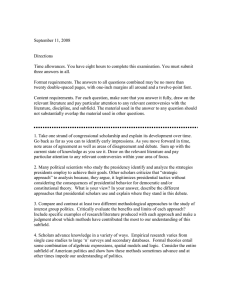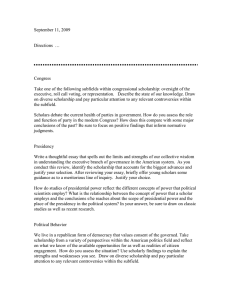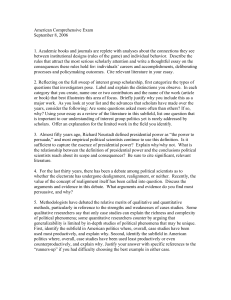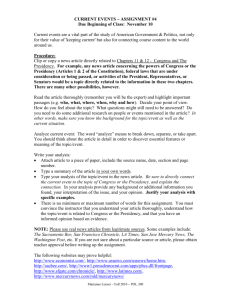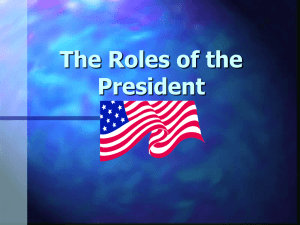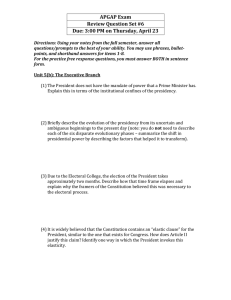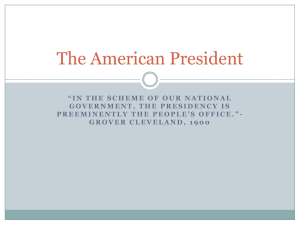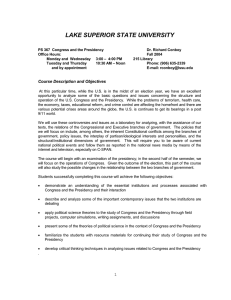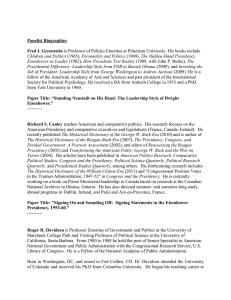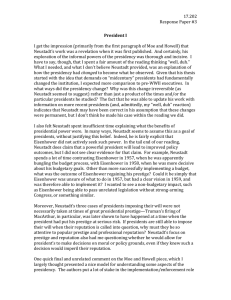May 19, 2011 Directions
advertisement
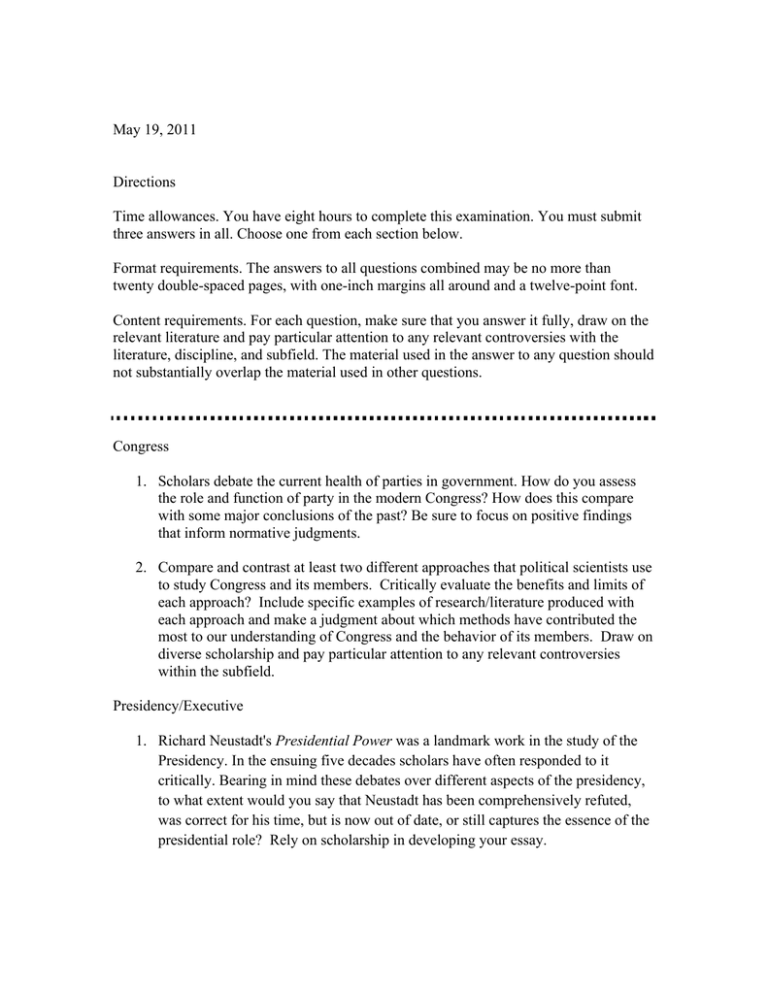
May 19, 2011 Directions Time allowances. You have eight hours to complete this examination. You must submit three answers in all. Choose one from each section below. Format requirements. The answers to all questions combined may be no more than twenty double-spaced pages, with one-inch margins all around and a twelve-point font. Content requirements. For each question, make sure that you answer it fully, draw on the relevant literature and pay particular attention to any relevant controversies with the literature, discipline, and subfield. The material used in the answer to any question should not substantially overlap the material used in other questions. Congress 1. Scholars debate the current health of parties in government. How do you assess the role and function of party in the modern Congress? How does this compare with some major conclusions of the past? Be sure to focus on positive findings that inform normative judgments. 2. Compare and contrast at least two different approaches that political scientists use to study Congress and its members. Critically evaluate the benefits and limits of each approach? Include specific examples of research/literature produced with each approach and make a judgment about which methods have contributed the most to our understanding of Congress and the behavior of its members. Draw on diverse scholarship and pay particular attention to any relevant controversies within the subfield. Presidency/Executive 1. Richard Neustadt's Presidential Power was a landmark work in the study of the Presidency. In the ensuing five decades scholars have often responded to it critically. Bearing in mind these debates over different aspects of the presidency, to what extent would you say that Neustadt has been comprehensively refuted, was correct for his time, but is now out of date, or still captures the essence of the presidential role? Rely on scholarship in developing your essay. 2. Compare and contrast at least two different methodological approaches to the study of executive branch politics. Critically evaluate the benefits and limits of each approach? Include specific examples of research/literature produced with each approach and make a judgment about which methods have contributed the most to our understanding of this subfield. Political Behavior 1. One of the enduring questions in the discipline of political science is: Whose interests are represented in our democracy? Answer the question by drawing on the political behavior literature in two of the following areas: voter turnout, participation, vote choice, elections and public opinion. 2. Write a thoughtful essay that spells out the limits and strengths of our collective wisdom in understanding organized interests in American society. As you conduct this review, identify any major unsettled debates and identify the scholarly contributions that account for our biggest steps forward in approaching a true picture of organized advocacy.
